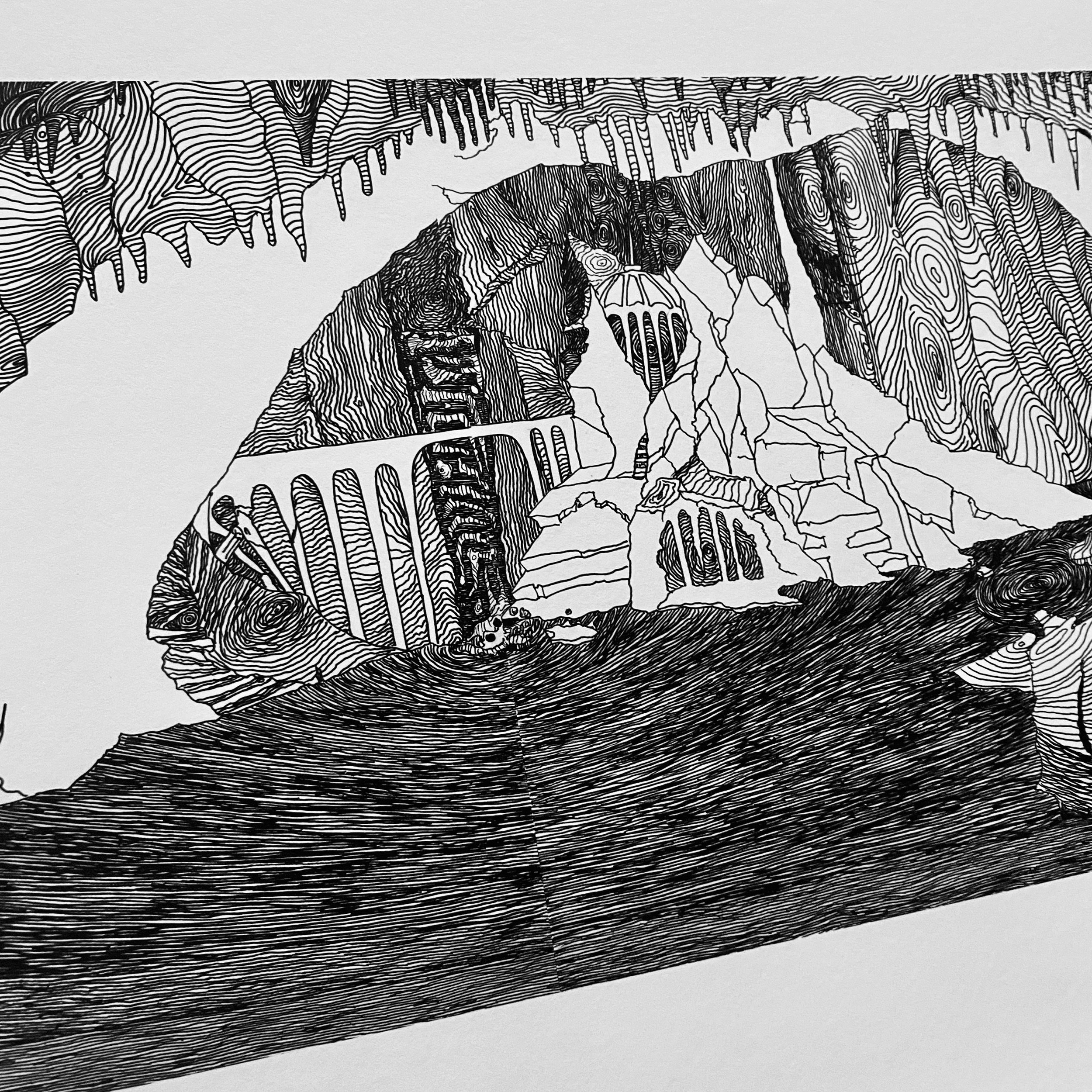Styx
Styx
22 in x 11 in, pen & ink, 2020.
This work is of the River Styx. In Greek mythology, Styx is both a goddess and river and forms the boundary between Earth and the Underworld and makes up one of the five rivers that converge at the center of the Underworld (Styx, Acheron, Phlegethon, Lethe, and Cocytus). In classical Greek mythology, Styx is the locus, where recently perished souls are transported across the river into the Underworld. Some renditions tell a different story, and that Acheron, is in fact where this transition from corporeal to ethereal takes place. Acheron is the only "real” river of the five and is located near the village of Glyki in modern day Greece. Dante adheres to this idea, and thus places Styx at the fifth circle of Hell. Here, the Wrathful claw and bite at each other on the muddy banks of the river, while the Sullen ("bad tempered, and sulky) make the water bubble at the surface with their “sighs” and “gurgling in their throats.”
My rendition provides a less grotesque image, and leaves the interpretation of the river up to the viewer. No narratives are placed on the scenery other than stalactites and abandoned ruins. This is in part due to the dispute and conflicting beliefs about Styx’s mystique and the role it plays in both myth and modern conceptions
“Son, thou now beholdest
The souls of those whom anger overcame;
And likewise I would have thee know for certain
Beneath the water people are who sigh
And make this water bubble at the surface,
As the eye tells thee wheresoe’er it turns.
Fixed in the mire they say, ‘We sullen were
In the sweet air, which by the sun is gladdened,
Bearing within ourselves the sluggish reek;
Now we are sullen in this sable mire.’
This hymn do they keep gurgling in their throats,
For with unbroken words they cannot say it.”
Inferno, Canto VII, lines 115-126, Longfellow translation.






